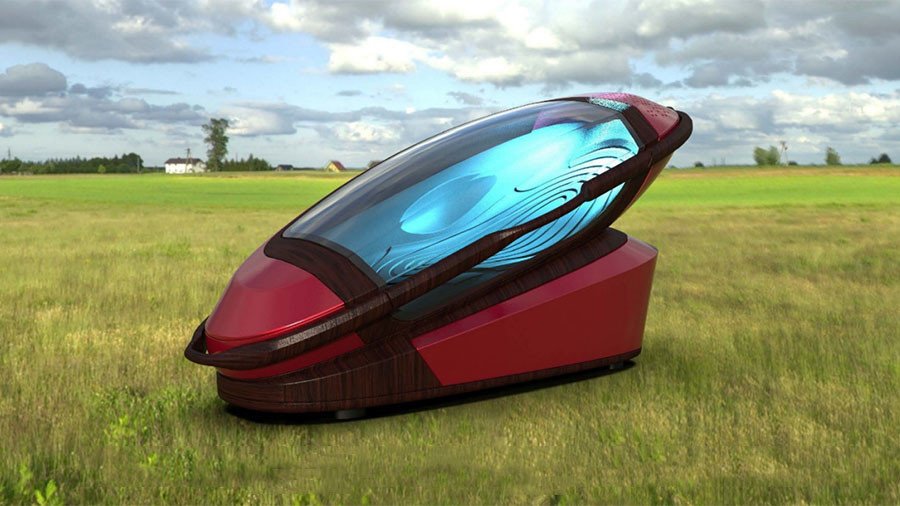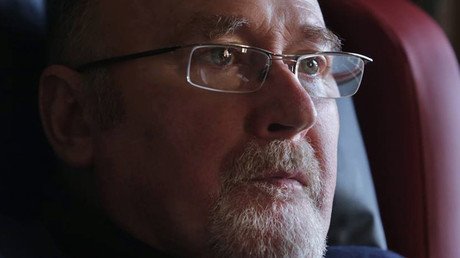Australian Dr. Death invents ‘sleek & elegant’ 3D-printed suicide machine

The inventor of a futuristic-looking suicide machine claims that anyone wishing to “peacefully” end their life will be able to do so "elegantly" by simply pressing a button. The death capsule can be 3D-printed and assembled anywhere in the world, with designs promising to be open access.
Named Sarco, the machine resembles a spaceship. But instead of an intergalactic journey, it will be taking its ‘passengers’ on a trip “to the next plane of existence,” according to Philip Nitschke, who came up with the idea along with an engineer Alexander Bannik. Their invention offers a peaceful and “I would even say an elegant death,” Nitschke was quoted as saying.
“Sarco does not use any restricted drugs, or require any special expertise such as the insertion of an intravenous needle,” says Nitschke, a former physician. Having assisted four people in ending their lives while euthanasia was legal for a short while in Australia’s Northern Territory in 1996, Nitschke became the first doctor in the world to administer a legal, lethal injection. Nitschke then founded Exit International, an NGO advocating for the legalization of assisted suicides.
The Sarco comprises a base, containing canisters of liquid nitrogen, and a capsule with a reclining couch and a touch-pad inside. Anyone wishing to use the deadly machine will have to pass a mental questionnaire online to get a four-digit code to enter the capsule. A person using it will be asked once again if they want to die as they get inside Sarco. Once activated by the click of a button, voice recognition or eye-movement, the capsule will fill with nitrogen, rapidly dropping the oxygen level.
“Within a minute, oxygen levels have dropped to a point where there is an inevitable loss of consciousness, followed by a peaceful hypoxia death,” the Australian reported, citing the notes accompanying the invention.
The future is in taking control over life AND death - the Sarco lets you! Your elective rational suicide/ #euthanasia is your business - no one else’s https://t.co/mfhnTsqQM5
— Philip Nitschke (@philipnitschke) December 1, 2017
The capsule can then be detached and used as a coffin, while the base is reusable. Both compartments can be created on a 3D printer in any corner of the world, with the blueprints said to be made free and placed on the internet. Sarco’s creators estimate the printing cost to be around $1,200.
Nitschke expects his suicide machine’s prototype to be completed by early 2018, he told the Daily Mail.
“I am attracted to the idea of the Sarco, and if I find myself in a situation where I need to use, it I will,” the 70-year-old Nitschke told Newsweek. Nitschke believes it is the “right of a rational adult to have a peaceful death.”
The idea of a stylish suicide machine didn’t however appeal to everyone. “I think it’s bad medicine, ethics, and bad public policy,” Georgetown professor of biomedical ethics, Dr. Daniel Sulmasy told Newsweek. Sarco is “glamorizing and normalizing suicide,” said a spokesperson for the National Association of Pro-life Nurses, Nancy Valko.
The Australian state of Victoria has meanwhile passed its euthanasia bill following two and a half years of debate. The law will take effect in mid-2019, and will allow patients aged over 18 suffering incurable diseases with life expectancy of less than six months to obtain a lethal drug. Apart from Victoria, euthanasia has over the past years become legal in the Netherlands, Belgium, Luxembourg, Canada and Colombia, as well as in a number of US states.















